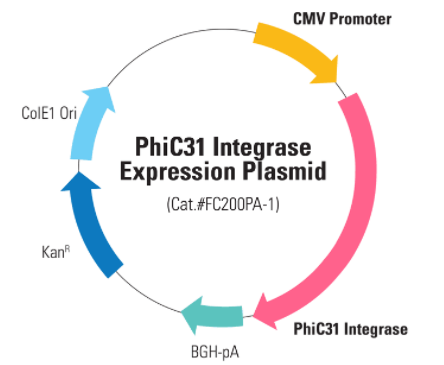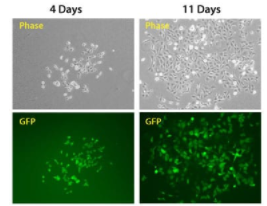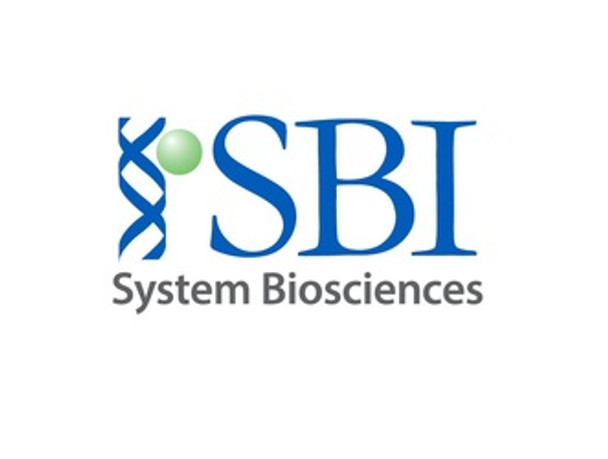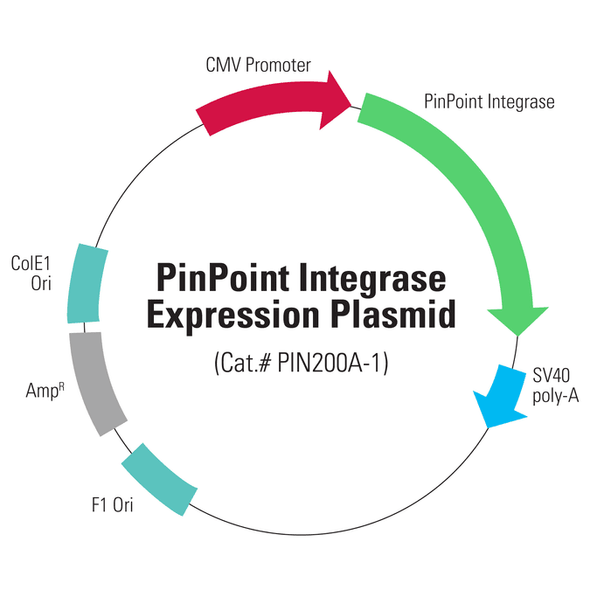System Biosciences
PhiC31 Integrase Expression Plasmid
- SKU:
- FC200PA-1
- Availability:
- Usually Shipped in 5 Working Days
- Size:
- 10ug
- Shipping Temperature:
- Blue Ice/ Dry Ice
Description
PhiC31 Integrase Expression Plasmid. Cat# FC200PA. Supplier: SBI System Biosciences
- Non-viral transgene delivery
- Single-copy integration
- Preferential integration at active sites
- Delivery of inserts with no size constraints
- Easy generation of cell lines
Products

Overview

- Non-viral transgene delivery
- Single-copy integration
- Preferential integration at active sites
- Delivery of inserts with no size constraints
- Easy generation of cell lines
How It Works
One-step transgene delivery with the PhiC31 Integrase System
With the PhiC31 Integrase System, you simply clone your gene-of-interest into the attB Donor Plasmid, and then (Step 1) co-transfect with a PhiC31 Integrase Expression Plasmid. (Inside the cell) The PhiC31 Integrase is transiently expressed, and mediates site-specific recombination between the attB site on the donor plasmid and a pseudo attP site in the genome. (Result) Because pseudo attP sites are typically present in transcriptionally active sites of the genome, your gene-of-interest will likely be integrated into an active region of the genome.

Supporting Data
Streamlined gene delivery with the PhiC31 Integrase System

Figure 1. The PhiC31 Integrase System efficiently introduces a puromycin resistance marker to HEK293 cells.
The dual promoter PhiC31 Donor Vector pFC-PGK-MCS-EF1-GFP-Puro (Cat.# FC551A-1) was co-transfected into HEK293 cells with either carrier DNA (top plate) or the PhiC31 Integrase Expression Plasmid (bottom plate) and the cells placed under puromycin selection after three days. After an additional eleven days, the cells were fixed and stained with a solution of 50% methanol plus 1% methylene blue to image colonies. Only the cells co-transfected with integrase formed colonies (bottom panel), demonstrating the high efficiency of the PhiC31 Integrase System for transgene delivery.

Figure 2. The PhiC31 Integrase System efficiently introduces a puromycin resistance marker and GFP to HEK293 cells.
The dual promoter PhiC31 Donor Vector pFC-PGK-MCS-EF1-GFP-Puro (Cat.# FC551A-1) was co-transfected into HEK293 cells with the PhiC31 Integrase Expression Plasmid (bottom plate), the cells placed under puromycin selection after two days, and cells imaged after another four and eleven days. Comparison of phase versus fluorescence imaging shows that the majority of cells robustly express the GFP reporter.










![pCOBLW [CAG-Oct4-Sox2-Klf4-Myc-GFP-SV40-Neo] Mouse Reprogramming PhiC31 Donor Plasmid pCOBLW [CAG-Oct4-Sox2-Klf4-Myc-GFP-SV40-Neo] Mouse Reprogramming PhiC31 Donor Plasmid](https://cdn11.bigcommerce.com/s-i3n9sxgjum/images/stencil/590x590/products/14174/14442/sbi%2520system%2520biosciences_1633075021__00205.original__26246.1633076797.jpg?c=1)


